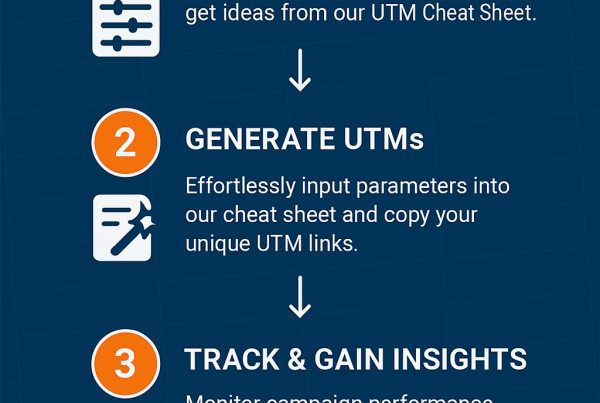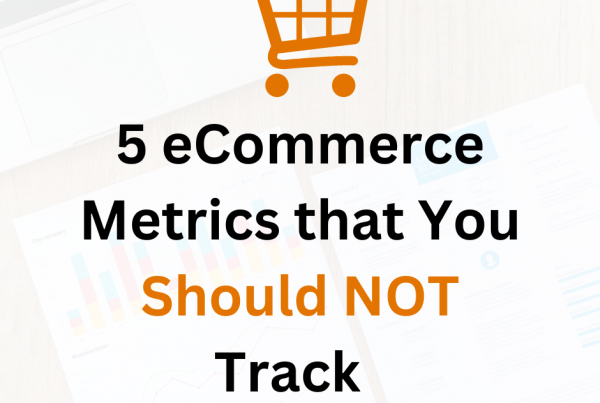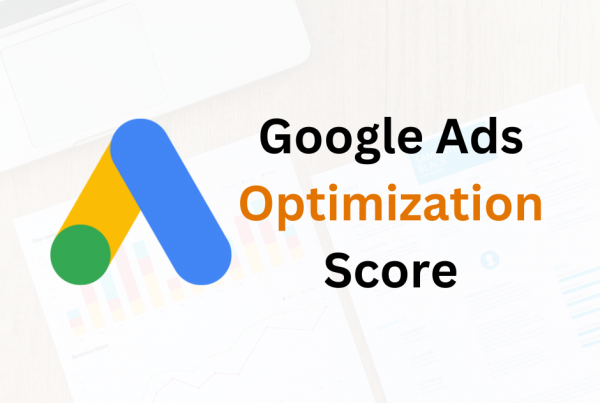When it comes to e-commerce sales, the key to maximizing revenue often lies in boosting Average Order Value (AOV).
Well, cross-selling is a great way to boost AOV.
There’s just one challenge: going through huge amounts of data to determine customer buying patterns and ultimately create the perfect product bundles.
This is why we designed the Cross-Selling Dashboard.
Understanding the Cross-Selling Dashboard: A Quick Overview
The Cross-Selling Dashboard is a nifty tool designed to you uncover cross-selling opportunities
It has interactive features that allow you to dive deep into products that are sold together, offering a full view of your customer’s buying journey.
Cross-Selling Dashboard Use Cases
The primary purpose of the Cross-Selling Dashboard is to identify top-selling product pairs and their impact on gross revenue. Here’s how you can use its insights to increase your AOV:
- Product Bundles
The Cross-Selling Dashboard reveals the winning product combinations, allowing you to create product bundles based on products frequently bought together.
For instance, say you sell yoga products and the dashboard reveals that most customers are buying the yoga towel and aromatherapy candle together. You can easily bundle these two products together and sell them at a slightly discounted price,
You can also use these insights to create gift bags that contain products which complement each other.
- Website Optimization
You can use the insights from the Cross-Selling Dashboard to optimize your website recommendations so that they mainly focus on products frequently bought together.
For instance, say customers frequently buy yoga mats and hammock swings together. When they go to the yoga mat landing page, on the “other products” section at the bottom of the page, you could include the hammock swings as one of the top 3 products frequently bought together.
- Enhancing Email Campaigns
The Cross-Selling Dashboard serves as a tool for aligning email promotions with customer preferences, ensuring that top products are included in bundles and promotions. From the data it provides, you can tailor your marketing strategies to match customer preferences.
In a nutshell, the Cross-Selling Dashboard is a great tool for scaling businesses, increasing AOV lifetime value, and enhancing gross revenue. Users focused on website optimization, can also leverage the dashboard to improve overall website performance and increase revenue.
Navigating the Cross-Selling Dashboard: User Experience
The Cross-Selling Dashboard is designed with ease of use in mind. Here’s how to navigate the platform:
- Select a Primary Product
This is the first interaction you have with the dashboard. Users start by selecting a primary product, which is often the top-selling item.
In the dashboard below, we’ll use Yoga Towel with Silicon Dots as the Primary product.
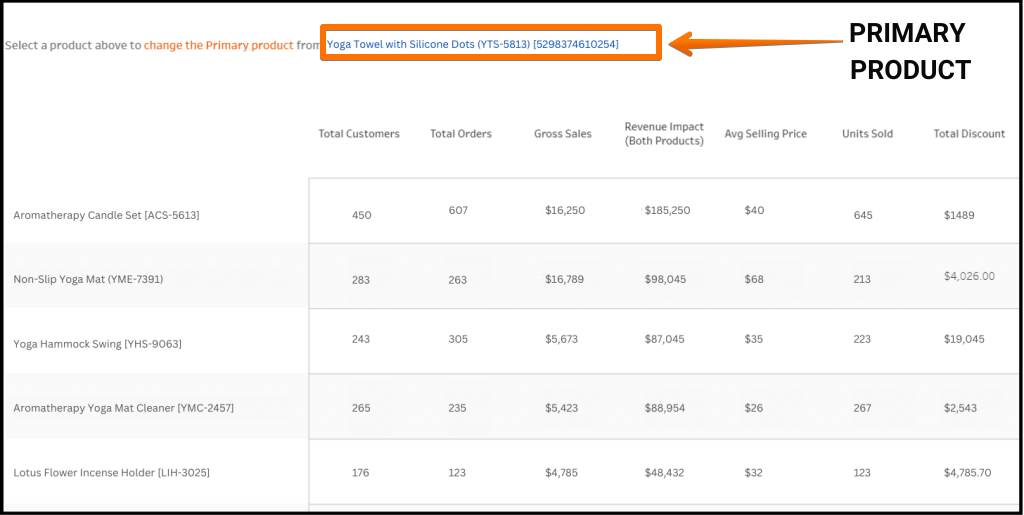
- Scatter Plot and List View
Upon selecting a primary product, users are presented with a scatter plot showcasing the total number of orders and gross revenue generated by secondary products.
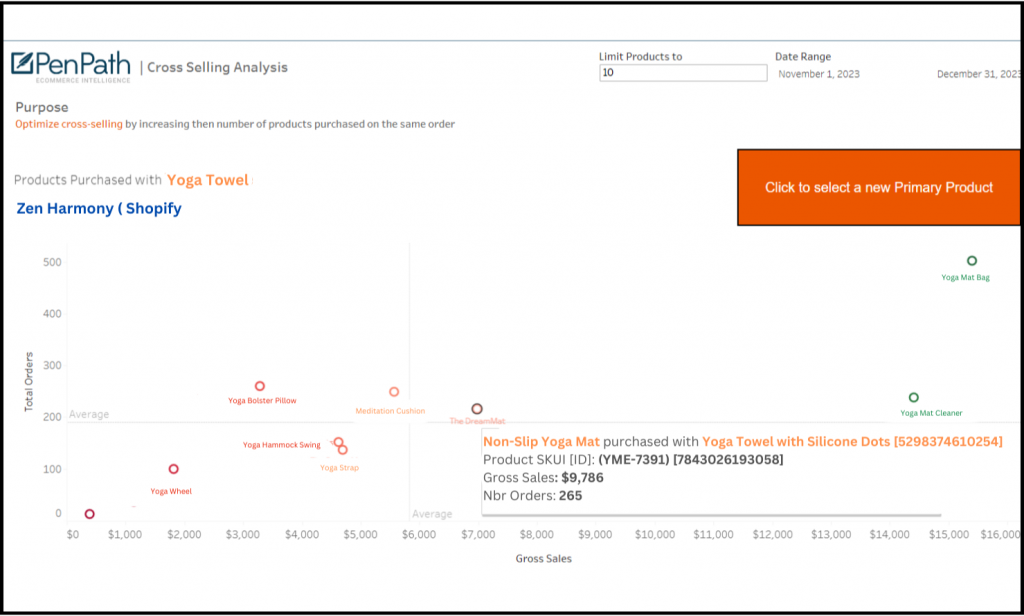
Now in this example where the Yoga towel is the primary product, you can see all the products that customers are buying together with it. The scatter plot also color codes the secondary products to help you visualize potential product bundles.
- Green: Most sales with the primary product
- Orange: Moderate sales
- Red: Least sales
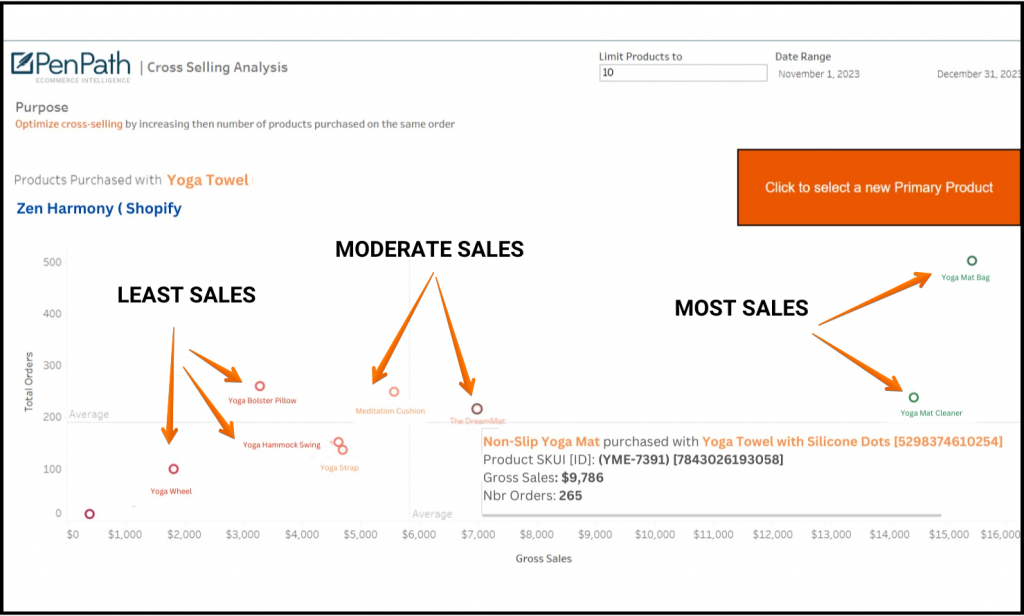
The secondary products in color green would therefore generate the most revenue.
P.S: To change the primary product, you simply click on one of the items on the scatter graph.
When you hover over one of the items on the scatter plot, it shows you the gross sales generated by the primary and secondary products as well as the total number of orders from that product combination.

When you scroll to the bottom, you’ll find a table that breaks down all the numbers for you.

If you click on one of the items on the table for example the Non-Slip Yoga Mat, another table and chart appears with an overview of sales generated by that product together with the primary product.
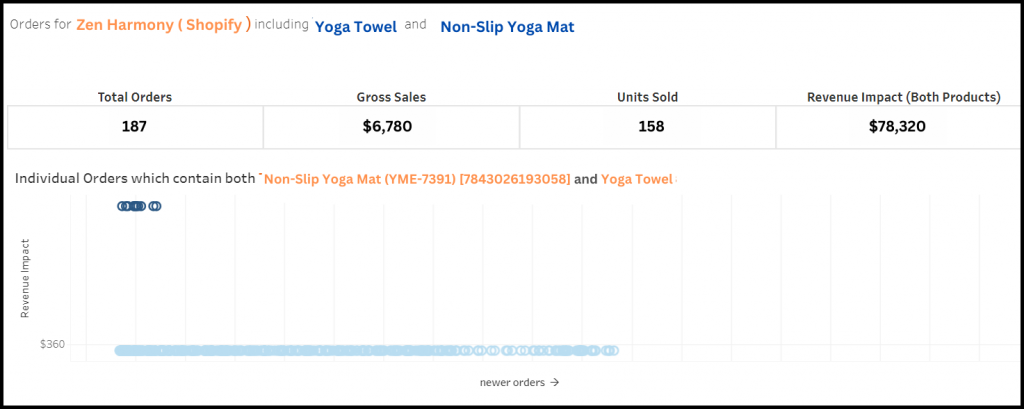
However, if you just hover on the product, a pop-up appears will appear with more information about the gross sales and revenue impact in a graph format.
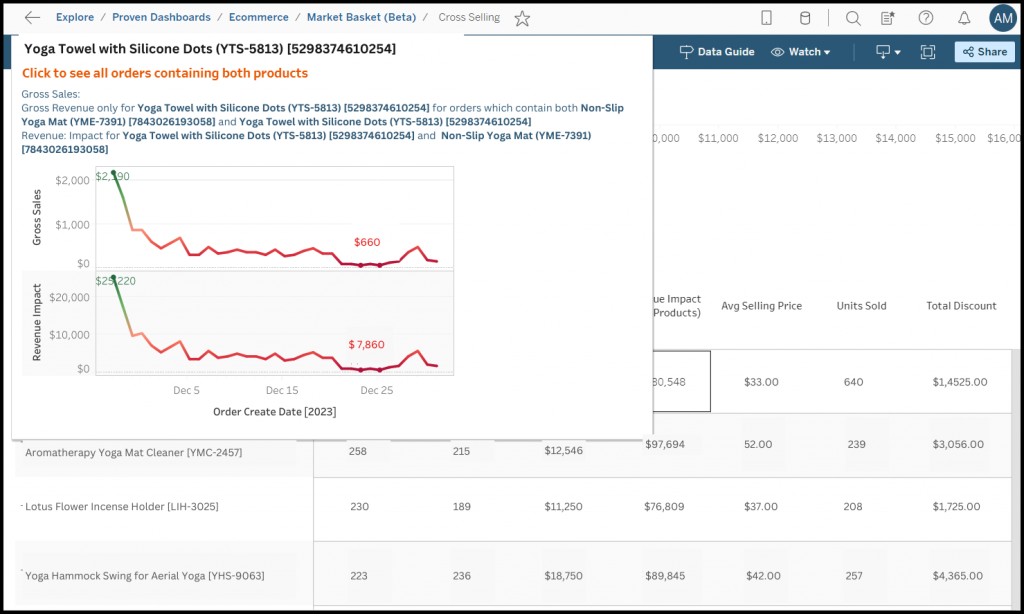
- Data Sources: Shopify and Amazon Integration
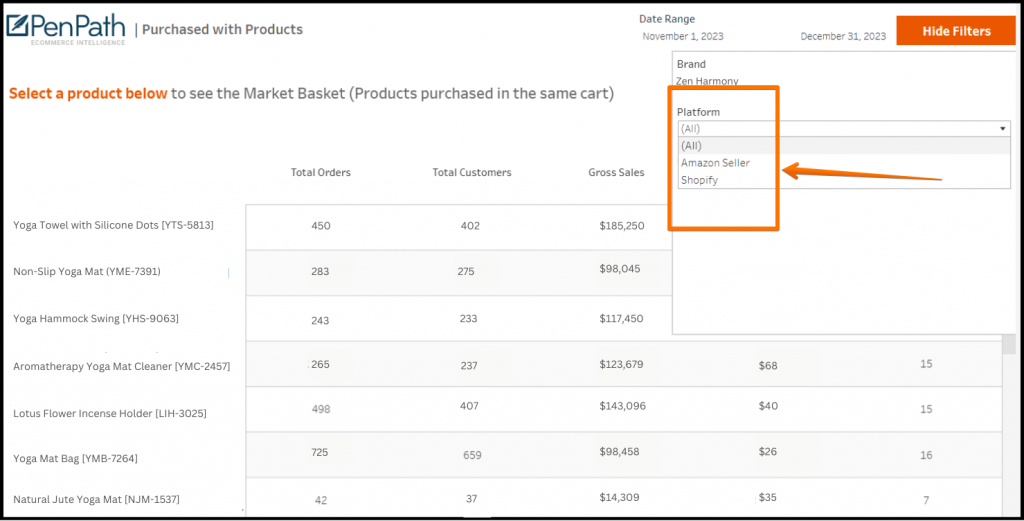
The Cross-Selling Dashboard pulls data from both Shopify and Amazon Seller, ( BigCommerce, WooComerce, Magento) providing visibility into customer behavior across platforms. With unique customer information from both platforms, you can now identify new and returning customers.
Conclusion
The Cross-Selling Dashboard is a game-changer when it comes to uncovering winning product combinations, boosting your AOV, and transforming your bottom line. It pulls in data from the major ecommerce platforms like Shopify and Amazon Seller, and presents it to you in an interactive format.
Ready to explore the potential of this cross-selling solution? Reach out to the PenPath team. Let’s revolutionize e-commerce together!


